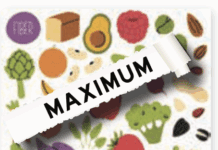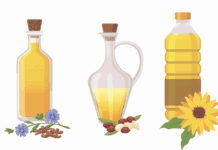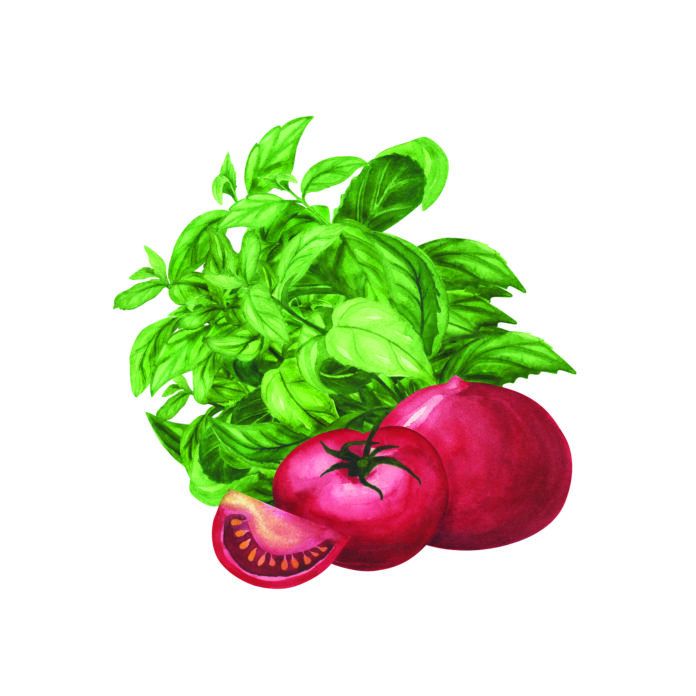The summer harvest of fruits and vegetables is in full swing! That means less expensive, locally grown, fresh options are plentiful—and packed with flavor. Imported and frozen produce are great options all year long, but if you want to make the most of summer’s bounty, here are a few examples to get you started!
Zucchini. Like all squash varieties, thin-skinned summer squash have their roots in the Americas, but the zucchini was cultivated in the mid-19th century in Italy and brought back to our shorelines. While they can grow to be several feet long, zucchinis (and yellow summer squash) are best when small (under eight inches).
While it may not seem like it, zucchinis are 95 percent water. They also have a decent amount of fiber, folate, potassium, and vitamin A.
These tender, cylindrical squash can be eaten raw or cooked in a wide variety of ways: try zucchini or yellow squash cut into sticks for dipping or strips for grilling, sliced or shredded in cold salads (like the one on page 7), cubed and sautéed or steamed, grated into soufflés, spiralized for a pasta substitute, or halved, stuffed, and baked for an easy, attractive main dish. For a special treat, use grated zucchini to make the cake known as zucchini bread. The flowers of the zucchini plant are edible and are considered a delicacy when stuffed and roasted or deep fried.
Look for unblemished, firm fruit. Store these versatile vegetables whole in the refrigerator in an open bag for up to two weeks.
Tomatoes. Tomatoes originated in the Americas and made their way into Italian cooking and cuisines around the world. While red tomatoes are the most common, tomatoes can be yellow, orange, purple, light green, striped, and even almost black. Breeding has made many varieties uniform in color, longer-lasting, and more disease-resistant, but many are also less sweet and flavorful. Older varieties of tomatoes (known as heirloom tomatoes) are often tastier and have been making a comeback in the marketplace.
➧ Buy Local. Buying locally grown produce (or growing your own) is a special, environmentally friendly summer treat.
➧ Get Creative! Summer vegetables and fruits are delicious raw or cooked. Experiment with different preparations and combinations.
➧ Store Properly. Look into the best storage method to your produce fresh longer.
➧ Hydrate. Fresh fruits and vegetables have a high percentage of water, making them a great way to help you stay hydrated in the heat of summer.
Tomatoes are ubiquitous in cuisines around the world: raw or cooked; fresh, canned, or dried; in salads, sauces, salsas, and soups; as a condiment, topping, or even a beverage.
Keep your tomatoes on the counter at room temperature. The refrigerator can make them mealy.
Peaches. Georgia may be the peach state, but these juicy gems originated in China. Believe it or not, peaches are related to almonds, so much so that ground peach stones can be mixed with sugar to make a less expensive, nut free version of marzipan called persipan.
Peaches are about 89 percent water and, like other yellow-orange fruits, they are rich in carotenoids, including lutein and zeaxanthin (which area associated with eye health) and beta-carotene (which is converted in our intestines to vitamin A).
As soon as they are fragrant and beginning to soften, eat fresh peaches (and other stone fruits like nectarines, apricots, and plums) whole, sliced into salads, chopped into salsas, or whirled into smoothies. Cook them on the stovetop, in the oven, or on the grill to intensify their sweetness, then serve them as a side dish, or make them part of a chutney, sauce, chilled soup, or topping. Sweet peaches pair will with other summer produce, such as tomatoes (as in the recipe on this page). A grilled peach half with a dollop of mascarpone cheese or vanilla ice cream makes and exceptional dessert.
Once ripened, stone fruits like peaches keep best in a high humidity compartment in the refrigerator.
Basil. Like tomatoes, basil is strongly associated with Italian cooking, but this herb originated in India and Southeast Asia. It is now used in cuisines around the world. Basil is available dried but can often be found fresh in the produce section. It grows well in gardens, as well as in pots, indoors or out. Snip some fresh leaves to brighten almost any dish, or puree handfuls with olive oil, garlic, and pine nuts or walnuts for a pesto that’s delicious on fish, shrimp, poultry, vegetables, grains, pasta, or as a sandwich spread.





















